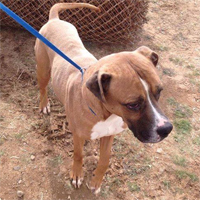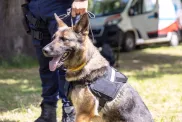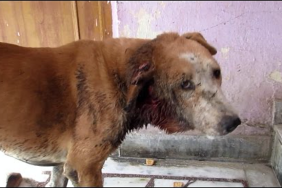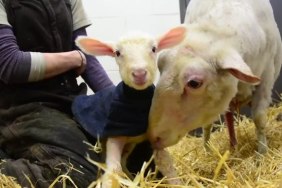On Halloween 2013, Heather Emajibi of Animal Aid and Rescue Foundation (AARF) heard something those in animal welfare have nightmares about: Leroy, a dog her organization had placed, was allegedly being neglected. The information was sourced from a police investigation of the Forks, Wash., Olympic Animal Sanctuary (OAS), complete with photos that showed unsanitary and outdated living conditions for 125 dogs. The Forks Police Department did not view the conditions as grounds for animal cruelty charges, and requested Steve Markwell, manager and sole staff at OAS, downsize his numbers to “less” than the current population.
The photos, however, ignited a panic among animal lovers worldwide that started with protests and ended with a middle-of-the-night escape and vigilante manhunt. How did things go from bad to worse in such a short period of time?
First, some background. In the late 2000s, the OAS was promoted as a rehabilitation center for dogs who were unsocial (from puppy mills or long-term social isolation), aggressive with other dogs or humans, or had a history of aggression that dubbed the dog “dangerous.” (It’s important to note a single bite — even in self-defense — can lead a judge in some jurisdictions to deem the animal “dangerous,” and that very animal can have the same label as a dog who mauled someone without provocation.)
At OAS, dogs in all these categories were accepted on a limited basis, offering hope to rescuers who were at the end of their leash with dogs who were nearly impossible to place. For a dog like Leroy, who had a single unfortunate interaction with another dog in 2009, OAS seemed to answer the prayers of his rescuers, who were without a foster home for the pooch.
Rehabilitation of aggressive animals is a complicated process, but AARF did its homework and felt Markwell’s sanctuary was qualified to give Leroy the care and training he deserved. But four years later, the Forks Police Department photos made them think otherwise and they asked Leroy be returned to their agency for evaluation, care, and placement. Markwell refused. A court battle followed, and — ultimately — Leroy was returned to AARF where, Emajibi says, “he has a long road ahead of him.”
But what of the other 124 dogs at OAS?
Taken in fall of 2012, it wasn’t until the fall of 2013 that the Forks Police Department photographs went viral after the 400-plus page police report was posted on the Internet. A few concerned people with direct knowledge of the Sanctuary turned into thousands in a panic and a flame war began. People threatened Markwell, publicly declared him a “murderer,” wished he would “have a heart attack,” and made ominous statements about what would happen “if they got their hands on him.” Suddenly, the efforts of those working behind the scenes to resolve the situation became frantic and urgent as Markwell began to fear for his safety.
One of those behind-the-scenes agencies was Guardians of Rescue (GOR), a New York-based all-volunteer non-profit rescue group. “We had been working with Markwell over the phone to help him, to help the dogs, and agreed we would take a few of them, four or five at a time, to help manage the situation,” Robert Misseri, GOR president, says. “But then [Markwell] called me and he said he was on the road with all 124 of [the dogs] in a trailer. We were not ready for that.” Nonetheless, GOR mobilized and gathered a team of nine volunteers, a veterinarian, and an animal behaviorist to meet Markwell at an unspecified area near the Arizona–Nevada border.
Meanwhile, throughout social media, groups of self-proclaimed activists heard Markwell loaded the dogs into a trailer in the middle of the night and fled. They began circulating photos of Markwell with the caption, “Call Authorities if seen… Wanted for alleged cruelty to animals and possible misappropriation of funds.” Despite the fact Markwell was not “wanted” or charged with any crime at the time, the photo was shared more than 5,000 times.
Doesn’t anyone read what they are spreading on the Internet, or consider the potential consequences of sharing false information?
Back in Nevada, while GOR would eagerly welcome the help in taking and cataloguing the dogs, it was one of Markwell’s stipulations, according to Misseri, that he would only surrender the animals if the location was not disclosed until after he left, “because of the threats made against him.” And so, a dozen people worked night and day in a secret rural location to construct pens for the dogs who made a three-day drive to be rescued from the rescue. The volunteers worked through the holidays, and are expected to remain on site for some time. They are short on supplies and donations. The thousands of people who spread misinformation and demanded immediate answers from GOR apparently do not realize the tremendous undertaking of handling 124 dogs, several of which have severe behavioral issues. These same critics continue to use social media to question the ethics of GOR’s team, which has led a well-respected and morally-sound operation.
I think there were, undoubtedly, issues with the way OAS took care of the dogs entrusted to them. I think there was questionable judgment in the way the Forks Police Department handled the case, likely from a lack of training in animal welfare issues. But the madness that followed, by people who had not had any direct involvement with the agency, was unparalleled.
Have we forgotten not all humans are horrible, animal-abusing criminals? In the mob-mentality judgment of Markwell (that may or may not have been rooted in truth), thousands of people now remain unwilling to accept GOR is doing exceptional work in the face of indescribable obstacles simply because they have been willing to work with someone who others simply chose to ostracize.
The 124 dogs from OAS were officially signed over to GOR on December 28, 2013, and for that we should all breathe a sigh of relief. If someone cannot — or will not — care for an animal properly, the animal should go to someone who can and will.
In the closing days of 2013, Guardians of Rescue was that someone.
If you want to use your social media time to share some honest good-work-in-progress, follow the OAS dogs on the Guardians of Rescue Facebook page. If you want to help their mission, the team most needs gift cards to Lowe’s for pen construction materials, cash donations to cover medical and behavioral care for the dogs, and for qualified 501(c) 3 non-profit animal rescues with proven rehabilitation programs to assist with canine placement after evaluation.









